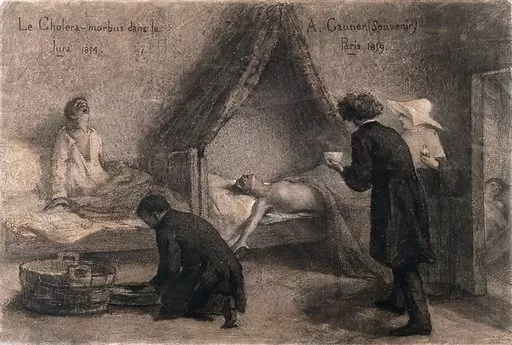Image Credit: lookandlearn.com
Historic epidemics have left a mark on human civilization and tell us that there is a strong link between pests and diseases. The past teaches us the importance of understanding and dealing with pests, especially within the close spaces of a house. For example, plagues and other epidemics have shown that pests like rodents can spread diseases.
Even today, the same pests that caused epidemics in the past continue to exist and invade homes in Fort Worth, Texas. Not only that, but they adapt to the changes around them and have become more resilient than ever. This makes their elimination more challenging. Antibiotic-resistant bacteria and diseases can spread from animals to humans.
In Texas, where pests thrive due to favorable climatic conditions, homeowners should realize the importance of regular pest control. By investing in professional services, you can secure your family as well as furry friends. Call your local Exterminator in Fort Worth today. In the meantime, read this blog to learn about how pests have caused mayhem in the past.
The Bubonic Plague (Black Death).
The Bubonic Plague, or the Black Death, affected Europe from 1347 to 1353 and was caused by the bacterium Yersinia pestis. The plague was responsible for the death of over 25 million humans, which was approximately one-third of Europe’s population back then. The primary vector for the spread of the plague was fleas living on black rats.
It is believed that these rats came to the country on Genoese ships due to trading in 1347. These ships contained rats that were infested by fleas. When the rats died from the disease caused by these fleas, they started looking for new hosts, which led them to attack humans. The ships spread the disease across the Mediterranean, reaching North Africa and Western Europe.
The impact of the Black Death was huge, with about 100 million people dying in the whole of Eurasia. It greatly reduced the population of the areas affected and disrupted society and the economy. The death of so many people led to problems like labor shortages, which caused wages to increase. It greatly affected and changed the social system of Europe.
The Bubonic Plague was a big lesson about pest control and sanitation. While the plague happened a long time ago, and sanitation measures have come a long way, some people still take pests lightly. The spread of diseases from rodents shows the need to control pests and try your best to reduce contact with them.
Even if rats were not solely responsible for the plague, the fleas on their bodies were, it still shows how pests can carry life-threatening bacteria and diseases with them. Make sure to keep your home clean and practice sanitation to keep rodents and other pests at bay. Pests are most likely not to invade your house if you adhere to modern sanitation practices.
Other disease-causing pests
The Anopheles mosquitoes are responsible for the spread of malaria. Such mosquitoes can transfer the bacteria with one bite. People living in the tropical regions of the country are more at risk of getting bitten by malaria mosquitoes. Malaria causes hundreds of thousands of deaths every year, and there are millions of cases reported annually.
Yello fever is another health condition caused by the Aedes aegypti mosquitoes. These mosquitoes are found in urban settings. There have been outbreaks in the United States in the past. One of the deadliest yellow fever outbreaks was in 1793 in Philadelphia, where it caused the death of over 5,000 people.
After rats, mosquitoes might be the most dangerous pests to be around.
Do not let history repeat itself!
There have been horrifying cases of diseases linked with pests that are still found in people’s homes in Texas. To avoid your risks of getting infected with a deadly virus or bacteria, hire professional pest control today in your area and stay safe!
